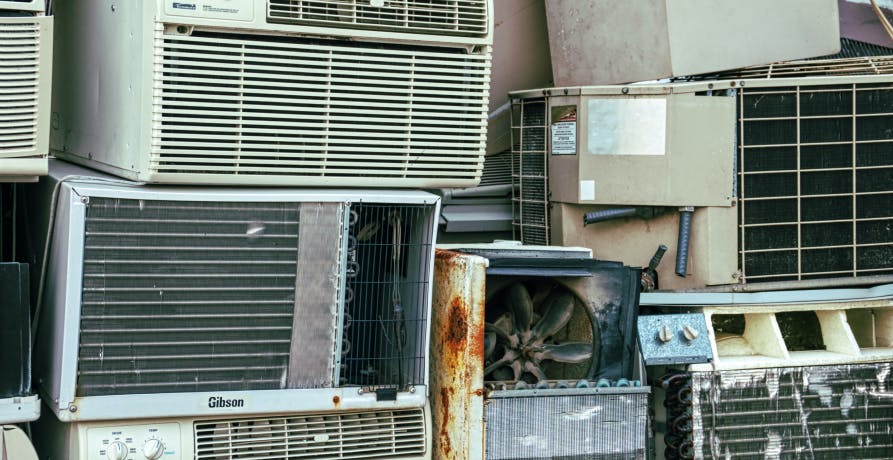
What are the 3 Pillars of Corporate Sustainability?
In this article, we'll explore what the 3 pillars of corporate responsibility are, why they're important, and how businesses can turn them into practical action.
ESG / CSR
Industries



The work from home arrangement has hit the mainstream, with 41% of workers with jobs that can be performed remotely working from home at least some of the time. The benefits of remote working (accelerated in part by the COVID-19 pandemic) are multifold, with research showing that employees with flexible working arrangements are more likely to be loyal to their employers and profess improved happiness levels. And the shift is not just beneficial for employees, employers are also seeing significant cost savings, not to mention the environmental benefits that arise from remote work.
The environmental aspect is something that is increasingly important given the growing challenges arising from climate change and the severe weather events that we’re experiencing as a result. Remote work is a relatively easy way to reduce carbon emissions without too much effort, producing up to 54% less carbon emissions when compared to in-office workers - a significant reduction in greenhouse gas emissions. Yet the environmental benefits of working from home can vary significantly from person to person depending on your home office set-up and daily habits. The good news is that remote workers can lower their GHG emissions through some easy-to-implement steps.
👉 In this guide, we'll explore ten effective strategies for minimizing your carbon footprint while working from home. From optimizing energy use in your home office to making smarter lifestyle choices, each tip is designed to help you reduce your environmental impact, all from the comfort of your home.
Creating an energy-efficient home office is central to reducing your environmental impact while working remotely. Small efforts, like opting for energy-saving devices and making the most of natural light, can significantly reduce your energy consumption and help you to save on electricity bills too.
Opting for energy-efficient devices in your home office is a smart decision for both the environment and your electricity bill. Look for products that have energy-saving certifications appropriate to your region, such as the ENERGY STAR rating in the US or the Energy Saving Trust Recommended label in the UK. These devices - like computers, monitors, or printers - are designed to use less power, making them a practical choice for reducing your carbon footprint.
💡ENERGY STAR-rated office equipment can save anywhere from 10 to 50% on energy use compared to standard models.
Set up your workspace in an area with plenty of natural light. Doing so can significantly cut down on the use of artificial lighting during your workday. This not only saves energy but also provides a brighter, more inviting workspace. The benefit here is twofold – lower energy costs and a more pleasant working environment!
When natural light isn't enough, ensure you're using energy-efficient lighting, like LED bulbs. They last longer and use a fraction of the energy compared to traditional bulbs, making them an ideal choice for eco-conscious remote workers.
💡LED lights used inside the home use at least 75% less energy than incandescent lighting and last up to 25 times longer!
👉 Discover the environmental benefits and challenges of remote working in our article.
By adopting these tips you can make your home comfortably warm in winter and pleasantly cool in summer - while also being kind to your wallet and the environment! The key lies in smart technology like programmable thermostats, paired with practical steps like improving your insulation. These straightforward strategies are essential for anyone aiming to balance home comfort with sustainable energy use.
💡 Proper insulation and sealing can save up to 15% on heating and cooling costs, or an average of 11% on total energy costs.
Introduce a programmable thermostat in your home. These devices allow you to set specific temperatures for different times of the day, ensuring that heating or cooling is used only when necessary. This smart control can lead to substantial energy savings, especially when you’re not in your home office.
Check and improve the insulation of your home, particularly around your workspace. Proper insulation keeps your home warmer in winter and cooler in summer, reducing the need for constant heating and cooling. This could involve weather-stripping doors, sealing windows, or adding insulation where needed.
Be conscious about the temperature settings in your home. Slight adjustments, like lowering the heat a few degrees in winter or raising the air conditioning temperature in summer, can significantly reduce energy consumption without sacrificing much when it comes to comfort.
Whenever weather permits, open windows to create natural airflow. This natural ventilation can help keep your workspace comfortable without relying on air conditioning, especially during spring and autumn.

Adopting digital document management is key for anyone aiming to work from home more sustainably. By cutting down on paper and keeping digital clutter in check, you're not just saving trees - you're also significantly reducing energy and resource waste, making your work process leaner and greener.
Embrace the digital age fully by going paperless in your home office. Use digital documents and cloud-based storage for your work. This switch not only reduces the need for physical paper but also saves on the energy and resources used in paper production and recycling.
💡 The paper industry is the fifth largest consumer of energy worldwide, accounting for 4% of all the world’s energy use.
Keep your digital clutter under control. Regularly organize and delete unnecessary emails. Not only does this keep your inbox manageable, but it also reduces the energy used for data storage on servers, which contributes to a smaller digital carbon footprint.
If printing is unavoidable, use both sides of the paper, opt for black and white printing, and choose eco-friendly paper and ink. Adjusting printer settings to ‘draft mode’ for internal documents can also save on ink and paper.
Switch to digital tools for note-taking and planning. Apps and software for task management and note-taking reduce the need for physical notebooks, which means fewer trees are being cut down.
In the quest for a greener home office, the supplies you choose can make a big difference. Opting for products made from sustainable materials or designed for reuse and recycling not only reduces your ecological footprint but also champions an environmentally conscious workspace.
When stocking your home office, choose supplies that are environmentally friendly. This includes items made from recycled materials, biodegradable pens, or refillable ink cartridges. Each sustainable product you choose makes a small, yet meaningful impact.
💡 Using recycled paper can reduce energy consumption by up to 70% compared to making paper from raw materials.
Before buying new office supplies, consider if you truly need them or if there’s an alternative already at hand. This mindful approach helps reduce unnecessary consumption and waste.
Seek out suppliers who are committed to sustainability. Purchasing from companies that prioritize eco-friendly practices and products not only supports green businesses but also encourages wider market shifts toward sustainability.
Find creative ways to reuse materials and repurpose old supplies. For example, use scrap paper for jotting down notes, or repurpose jars and containers for storage. It’s a simple yet effective way to minimize waste.

Transforming your home office into an eco-friendly space starts with how you approach everyday tasks. Small changes, like embracing energy-efficient appliances and being strategic about water heating, can significantly lower your energy consumption.
Be strategic with your household appliance use. For example, only run dishwashers or washing machines with full loads, and opt for eh settings. This not only saves water but also reduces electricity consumption.
Lower the temperature setting on your water heater. Water heating can be a significant energy expense, and even a small adjustment can lead to noticeable savings in energy use and cost.
When doing laundry, choose cold water washes whenever possible and air dry clothes instead of using a dryer. These practices help to reduce energy consumption.
Turn off lights in unoccupied rooms and rely more on task lighting instead of lighting up an entire room. You could even consider using timers or smart lights that can be controlled remotely for better energy management.

Effective management of the power settings on your electrical devices can transform your home office's energy footprint. Simple yet effective tactics like unplugging electronics when they’re not in use and installing smart power strips help to curb wasteful energy consumption.
💡 Did you know? Home electronics are on standby for as much as 75% of the time and 40% of the annual energy consumption of electronic devices happens when they’re turned off.
Devices that are plugged in, even when turned off, can still draw power. Make it a habit to unplug electronics when they’re not in use, especially overnight, to avoid this 'phantom' energy use.
Smart power strips can be a game-changer for managing the energy use of multiple devices. They can automatically cut power to devices that go into standby mode, helping you save on energy without the need to manually unplug everything.
For devices that use batteries, like laptops or cell phones, practice good battery maintenance. This includes unplugging the charger once it’s fully charged and avoiding overcharging, which can help improve battery life and efficiency.
Consider using timers or programmable schedules for devices that don’t need to run continuously. This can include office equipment, such as printers and scanners, which can be set to turn off during non-working hours.
Invest in an energy monitor to track the power usage of your home office. Understanding your energy consumption patterns can help you make more informed decisions about where and how to reduce usage.

The way we use technology and the internet has a larger impact on our carbon footprint than many of us realize. By choosing eco-friendly options like green web hosting and responsibly disposing of old gadgets, you can make significant progress towards a more sustainable digital presence.
💡 Did you know? The digital sector is responsible for a significant amount of greenhouse gas emissions. It’s estimated that digital greenhouse gas emissions account for between 2.3 and 3.7% of global emissions - the equivalent of the total emissions of the airline industry.
If you have a personal or professional website, consider hosting it with a green web hosting provider. These providers use renewable energy sources or offset their carbon emissions, making your online presence more sustainable.
Keep your email efficient and eco-friendly. Regularly clear out old emails and unsubscribe from unnecessary newsletters to reduce your digital footprint. Data storage consumes energy, so a clutter-free inbox means less energy used in data centers.
👉 Discover the carbon footprint of data storage in our article.
Video calls have become a staple of remote work. To save on energy, switch off the camera when it's not necessary, and encourage audio-only meetings when possible. This reduces the data and energy required for streaming.
When it's time to upgrade or dispose of electronic devices, make sure you do so responsibly. Look for e-waste recycling programs in your area to ensure gadgets are disposed of in an environmentally friendly way.
Your food choices can be a powerful tool for positive environmental change, especially when working from home. By choosing locally sourced and plant-based foods and saying no to single-use plastics, you're making each meal a step towards a more sustainable lifestyle.
Prioritise buying local and organic foods for your meals. This reduces the carbon emissions associated with long-distance transportation of food items. Plus, local produce is often fresher and has the added benefit of supporting your local community.
Consider including more plant-based meals in your diet. The production of plant-based foods generally has a lower environmental impact compared to animal-based products, reducing greenhouse gas emissions and water usage.
💡 A plant-based diet can reduce greenhouse gas emissions linked to the agricultural sector by 70%.
Plan your grocery trips to minimize waste. Buy only what you need, focusing on reducing food waste, and try to select products with minimal or eco-friendly packaging. When shopping, bring your own reusable bags and avoid products with excessive plastic packaging.

Water is an important part of sustainable working and every drop counts when it comes to water conservation. By installing water-efficient fixtures and being conscious of how much water you use daily, you're not just cutting down on waste - you're actively contributing to the preservation of this vital resource.
Choose plants that require minimal watering for your home office. Plants like succulents or snake plants not only add a green touch to your workspace but also thrive with less water, making them ideal for conserving water resources.
Be mindful of water usage when making coffee, tea, or other beverages during your workday. Opt for methods that use water efficiently, and avoid running water unnecessarily while waiting for your drink to brew.
If your home office routine includes preparing meals, adopt water-saving practices in your kitchen. For example, wash vegetables in a bowl rather than under running water, and only run the dishwasher when it’s full.
Ensure that any plumbing in or near your home office, such as a bathroom or kitchenette, is leak-free. Regular checks can prevent water wastage and contribute to overall home water efficiency.

Working from home doesn’t mean you’re disconnected from your company’s environmental efforts. In fact, it opens new avenues for contributing to and even leading green initiatives within your organization.
Stay involved in your company’s sustainability programs by participating in virtual meetings, workshops, and campaigns. Actively engage in discussions and contribute ideas on how the company can implement or improve eco-friendly practices.
Organise or participate in remote-friendly sustainability challenges within your team or company-wide. This could include challenges like reducing paper usage, optimizing home energy efficiency, or even virtual tree planting initiatives.
Advocate for policies that support sustainability among remote workers. Proposals could include company support for green home office setups, or implementing a 'Green Rewards' program where remote workers are incentivized for adopting and maintaining eco-friendly practices in their work and home life. This could involve rewards for using renewable energy sources, maintaining a zero-waste workspace, or consistently engaging in sustainable community initiatives.
Suggest or facilitate partnerships between your company and environmental organizations. This can lead to collaborative projects, learning opportunities, or corporate social responsibility initiatives that align with environmental goals.
👉 Find out why remote working companies should care about their employee’s emissions.
At Greenly we can help you to assess your company’s carbon footprint, and then give you the tools you need to cut down on emissions. Why not request a free demo with one of our experts - no obligation or commitment required.
If reading this article has inspired you to consider your company’s own carbon footprint, Greenly can help. Learn more about Greenly’s carbon management platform here.